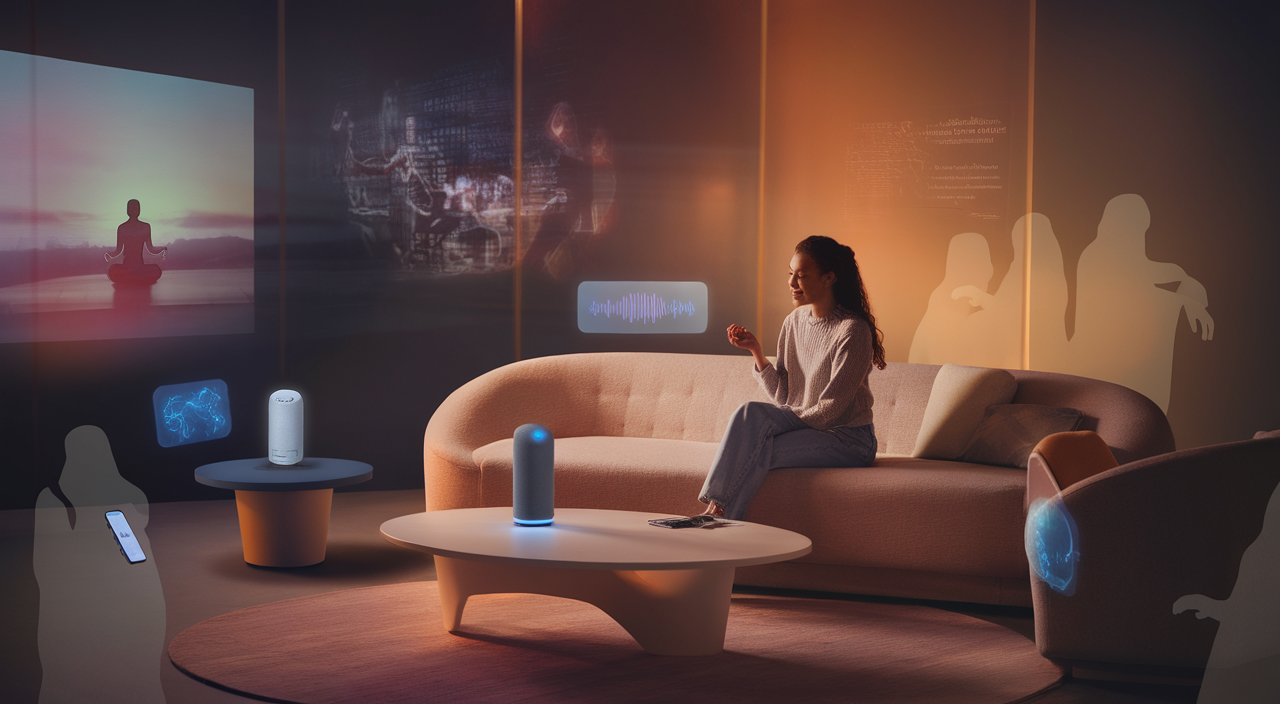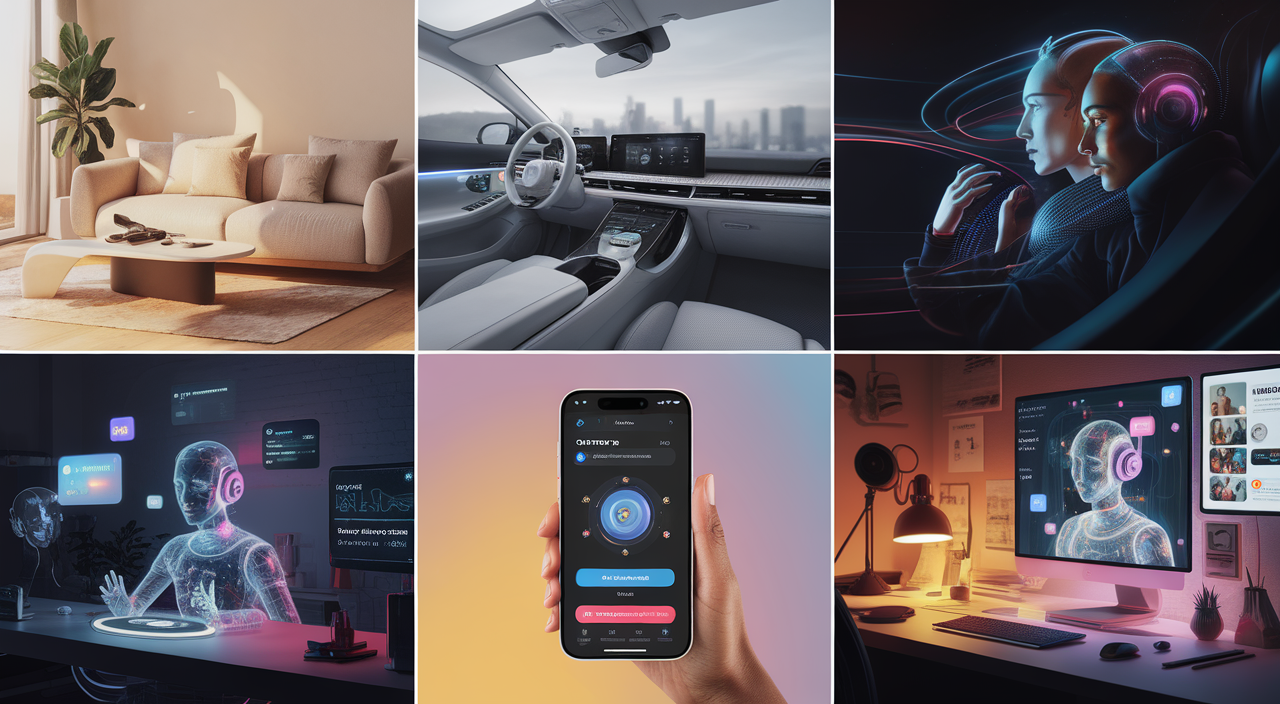The AI voice obsession trend has shifted from robotic sounds to remarkably human-like speech, with modern AI voices scoring above 4.0 on the 5-point Mean Opinion Score scale. This tech advancement has sparked a thriving global voice assistant market that hit $2.8 billion in 2021, showing our growing emotional bond with these artificial companions.
Key Takeaways
- Neural Text-to-Speech technology has created AI voices that sound genuinely human, appearing everywhere from smart speakers to social media content creation tools.
- People are developing deep emotional attachments to AI voices, treating them with politeness and engaging in casual conversations beyond simple commands.
- Voice characteristics in AI are specifically engineered to sound trustworthy and calming, triggering our natural human response to friendly voices.
- The trend raises concerns about decreased face-to-face communication skills and emotional intelligence development as people substitute AI for human interaction.
- Privacy risks accompany this technology as voice data is collected and stored, creating vulnerabilities that extend beyond simple privacy breaches.
The Rise of Human-Like AI Voices
Neural Text-to-Speech has transformed AI voices into almost perfect human replicas. I’ve noticed these voices now feature in everything from home assistants to content creation platforms. The technology has improved so dramatically that most people can’t tell the difference between AI and human voices in blind tests.
Emotional Bonds with Digital Voices
The emotional connection people form with these voices fascinates me. Users often say “please” and “thank you” to their devices, and many engage in personal conversations with their AI assistants. This behavior shows how quickly we humanize these digital voices.
The Science of Voice Design
Voice designers carefully craft AI assistant personalities to sound approachable and reliable. They select specific pitch patterns, speech rates, and subtle vocal characteristics that make us instinctively trust these artificial voices. Our brains respond to these engineered voice patterns just as they would to a friendly human voice.
Social and Developmental Concerns
This trend comes with social consequences. As people spend more time talking to AI, they may practice human interaction skills less frequently. Children growing up with AI companions might miss crucial social development opportunities that only come from real human exchanges.
The Privacy Risks of Speaking to AI
The privacy implications also concern me. Each voice interaction creates data that companies collect, analyze, and store. This poses risks beyond simple privacy violations — your voice contains biometric information that’s uniquely yours and potentially vulnerable to misuse if compromised.
Why We’re Falling in Love with AI Voices (And Should We Be Worried?)
The Rise of the AI Voice Obsession Trend
The AI voice obsession trend has taken a massive leap forward, transforming from clunky robot sounds into smooth, human-like conversations. I’ve noticed how modern AI voices score impressively high – above 4.0 on the 5-point Mean Opinion Score scale, showing just how natural they’ve become. This shift mirrors what I’m seeing in popular social media trends, where authenticity and relatability rule.
The numbers really tell the story – the global voice assistant market hit $2.8 billion in 2021, proving that this AI voice obsession trend isn’t just a passing fad. It’s similar to how aesthetic food presentations captured our attention – we’re drawn to experiences that feel personal and refined.
From Robotic to Really Human
The evolution of AI voices reads like a tech fairy tale. Early systems like DECtalk sounded mechanical and forced, but today’s Neural Text-to-Speech (Neural TTS) technology has changed everything. I’ve seen this tech pop up everywhere, just like viral food trends that suddenly appear on every platform.
Here’s where you’ll find these advanced AI voices making their mark:
- Smart speakers and virtual assistants in your home
- Mobile apps and smartphone features
- In-car navigation and entertainment systems
- Customer service platforms and call centers
- Social media content creation tools
The AI voice obsession trend has gained such momentum because these voices feel natural and responsive. Solutions like Google’s WaveNet, Amazon’s Polly Neural TTS, and Microsoft’s Azure Neural TTS have made significant strides in creating voices that sound genuinely human. It’s comparable to how food plating trends have evolved from basic presentation to artistic expression — the technology has matured into something truly impressive.
The integration of these voices into our daily lives shows no signs of slowing down. I’m seeing more people using AI voices for everything from content creation to personal productivity tools, proving that this technology isn’t just about utility — it’s about creating meaningful connections through artificial but incredibly natural-sounding speech.
The Psychology Behind Our AI Voice Obsession
Understanding Our Emotional Connection to AI Voices
The AI voice obsession trend has created a fascinating shift in how we form relationships with technology. I’ve noticed an increasing number of people developing deep emotional connections with their AI assistants, similar to how they might bond with a friendly neighbor or trusted confidant. Just like how the sad girl dinner trend reflects our emotional relationship with food, our interactions with AI voices reveal interesting patterns about human behavior.
Voice characteristics play a crucial role in this AI voice obsession trend. The carefully engineered pitch, tone, and pace of AI voices aren’t random – they’re specifically designed to sound trustworthy and calming. This mirrors how we naturally respond to human voices during activities like sharing a peaceful breakfast moment.
The Rise of AI Companionship
The way we interact with AI voices has evolved beyond simple commands. I’ve observed users treating their AI assistants with increasing politeness, much like how parents encourage manners during toddler mealtimes. These behaviors include:
- Using “please” and “thank you” regularly
- Engaging in casual conversations without specific tasks
- Sharing personal stories and experiences
- Expressing gratitude for AI responses
- Developing preferred interaction styles
This shift in behavior has led to a boom in companion AI apps. Replika, for instance, has attracted millions of active users who engage in daily conversations with their AI companions. It’s becoming as natural as sharing snack routines on social media.
The wellness sector has also tapped into this phenomenon, with AI voices now guiding meditation sessions and promoting relaxation. Users report feeling genuine comfort from these AI-led sessions, highlighting how deeply the AI voice obsession trend has penetrated our daily lives.
The Dark Side of Digital Companionship
Social and Emotional Impact of the AI Voice Obsession Trend
I’ve noticed a concerning shift in how people connect as the AI voice obsession trend continues to grow. While these digital companions offer convenience, they’re creating a substitute for genuine human interaction that could harm our social fabric.
The emotional attachment to AI voices has become particularly worrying. Just like the sad girl dinner phenomenon reflected isolation in eating habits, the AI voice obsession trend is reshaping our social connections in potentially harmful ways.
Here are the key social challenges I’ve identified:
- Decreased face-to-face communication skills
- Reduced emotional intelligence development
- Weakened ability to read non-verbal cues
- Growing dependency on digital validation
- Limited practice in conflict resolution
Privacy Risks and Security Concerns
The AI voice obsession trend raises serious privacy red flags that can’t be ignored. Similar to how the toddler plate trend sparked discussions about sharing children’s content online, AI voice technology presents its own set of privacy challenges.
The risks become more pronounced as voice cloning technology advances. Your casual conversations with AI companions aren’t just chats – they’re data points being collected, analyzed, and stored. This creates vulnerabilities that extend beyond simple privacy breaches.
I’ve seen how quickly users can become emotionally invested in these AI relationships, similar to the way some embrace the soft girl snack routine as a lifestyle rather than just a trend. When services change or shut down, this attachment can lead to real emotional distress.
The market for AI voice technology shows no signs of slowing down. While the aesthetic breakfast tray might be a harmless trend, the AI voice obsession trend carries deeper implications for our social fabric and personal security.
To protect users, I believe we need:
- Clear disclosure of data collection practices
- Strict limits on voice data storage
- Regular security audits
- Transparent AI interaction guidelines
- Better emotional support resources for users
Lately, creators have been experimenting with increasingly realistic narrations, like the one featured in this viral audio clip, reflecting the growing fascination with synthetic storytelling.
Sources:
Amazon – Polly Neural TTS
Google – WaveNet
Microsoft – Azure Neural TTS
Replika
DECtalk








